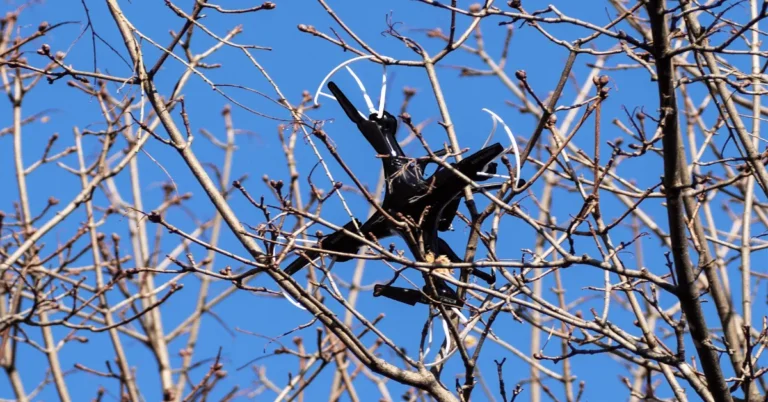How I Travel with My DJI Mavic Pro and Navigate Airport Security: A Personal Journey

From a young age, I have been fascinated by the intricate beauty of landscapes and cityscapes. This fascination evolved into a passion for photography, and eventually, I discovered the incredible potential of aerial photography.
The ability to capture the world from above offers a unique and breathtaking perspective, which traditional ground-level photography simply cannot achieve.
It was this realization that led me to invest in the DJI Mavic Pro, a decision that has profoundly transformed my travel experiences.
The DJI Mavic Pro is more than just a drone; it is a gateway to new visual horizons. Its compact size, ease of use, and advanced features make it an essential companion for any travel enthusiast who wishes to document their journey from an extraordinary vantage point.
The drone’s high-resolution camera, stability in various weather conditions, and intelligent flight modes allow me to capture stunning aerial shots effortlessly.
Each trip becomes an opportunity to explore and document the world’s beauty in a way that was previously unimaginable.
Investing in the DJI Mavic Pro was a pivotal moment in my travel adventures. It has allowed me to see and share places from a bird’s-eye view, providing a fresh and captivating perspective.
Whether soaring over bustling cities, serene coastlines, or rugged mountains, the drone enables me to capture moments that are both visually striking and narratively rich.
This tool has not only enhanced my photography skills but also deepened my appreciation for the diverse and intricate tapestry of our world.
My passion for aerial photography has thus become an integral part of my travels, pushing me to explore new destinations and capture their essence from above.
The DJI Mavic Pro has become an indispensable part of my journey, adding a new dimension to my adventures and allowing me to share the beauty of our planet in a truly unique way.
Wondering if your DJI Mini 2 can take flight at Sandy Hook Beach? Check out our info on drone regulations there to be sure!
Preparing for the Journey: Packing the DJI Mavic Pro
Packing the DJI Mavic Pro efficiently and securely is crucial for a smooth travel experience. The first step in preparing for the journey involves selecting a suitable carrying case.
Opt for a hard-shell case that provides ample protection against potential impacts and environmental elements. Ensure the case has custom compartments to securely fit the drone, batteries, controller, and other accessories.
Before placing the DJI Mavic Pro in the carrying case, it is essential to remove the propellers and store them separately to prevent any damage.
Utilize the designated slots or pockets within the case for the propellers to ensure they remain intact. Additionally, securing the gimbal with a protective cover can prevent damage to the camera during transit.
Battery management is a critical aspect of packing the DJI Mavic Pro for air travel. Ensure that all batteries are partially charged, ideally between 30-50%, as fully charged or depleted batteries can pose risks.
Most airlines have specific regulations regarding lithium-ion batteries; typically, they should be carried in carry-on luggage rather than checked baggage.
It’s advisable to use battery-safe bags that provide an extra layer of protection and comply with airline safety guidelines.
Another important step is to check the latest airline regulations regarding drone transport. Different airlines may have varying rules, so visiting the airline’s official website or contacting their customer service can provide clarity.
Additionally, keeping a printed copy of the airline’s drone policy can be helpful in case of any queries during security checks.
To further protect the DJI Mavic Pro from accidental damage, consider padding any empty spaces within the carrying case with soft materials like foam or bubble wrap.
This will help absorb shocks and prevent movement during transit. Labeling the case as fragile can also alert baggage handlers to handle it with care.
By meticulously preparing and packing the DJI Mavic Pro, you can ensure a hassle-free travel experience, allowing you to focus on capturing stunning aerial footage at your destination.
Wondering if a Hasselblad camera is the right fit for your DJI Mavic Air? Dive into the benefits of buying a Hasselblad camera on the DJI Mavic Air to unlock stunning image quality.
Understanding Airline and Airport Regulations
Embarking on a journey with a DJI Mavic Pro requires careful consideration of airline and airport regulations.
Each airline and airport may have distinct policies regarding the transport of drones, making it imperative to conduct thorough research before traveling.
During my travels, I encountered varying degrees of scrutiny and different sets of rules, which highlighted the importance of being well-prepared.
For instance, while some airlines allow drones in carry-on luggage, others may require them to be checked in. The batteries, particularly lithium-ion ones used in drones, often present another layer of complexity.
Airlines typically mandate that these batteries be carried in the cabin due to their potential fire hazard. To ensure compliance, I always check the specific airline’s website and customer service for the most up-to-date information on their drone policies.
Navigating airport security with a DJI Mavic Pro also presents unique challenges. In some airports, security personnel meticulously inspect the drone and its components, while in others, the process is more streamlined.
I once faced a situation where the security officers were unfamiliar with drone regulations, leading to a lengthy inspection.
To mitigate such issues, I recommend carrying printed copies of the relevant regulations and being prepared to explain the purpose and safety features of the drone.
To stay updated on any regulatory changes, frequent travelers should leverage online resources such as the official airline and airport websites, as well as forums and travel blogs dedicated to drone enthusiasts.
Additionally, subscribing to newsletters from aviation authorities can provide timely updates on new regulations or policy adjustments.
This proactive approach not only ensures compliance but also contributes to a smoother travel experience with your DJI Mavic Pro.
Later, we’ll delve into the legalities surrounding drone hunting: Is Hunting with a Weapon Mounted on a Drone Regulated?
Navigating Airport Security: My Step-by-Step Process
Traveling with a DJI Mavic Pro can be daunting, particularly when navigating airport security. Through trial and error, I’ve developed a process that ensures smooth passage through security checkpoints.
Initially, I ensure my Mavic Pro is packed securely in a carry-on bag, with all batteries stored in a fireproof case to comply with airline regulations. Understanding the rules about lithium batteries can save time and prevent potential issues.
Upon arrival at the security checkpoint, I proactively declare my DJI Mavic Pro to the TSA agents. This transparency helps build trust and often expedites the screening process.
I usually say something like, “I have a drone with me in my bag,” which prompts the agents to ask any necessary questions upfront.
When asked about the drone, I explain that I use it for photography and videography purposes. This often satisfies their curiosity and clarifies my intentions.
On one occasion, an agent was particularly interested in the drone’s capabilities, leading to a brief but friendly conversation that eased the tension.
In addition to verbal communication, I prepare for potential inspections by organizing my bag in a way that facilitates easy access to the drone and its components.
I place the DJI Mavic Pro and its accessories at the top of my bag, so they are readily available if further examination is required.
This approach has proven effective, as it minimizes the disruption and allows the TSA agents to quickly inspect and clear my equipment.
Not all experiences have been seamless. Once, during a busy travel period, I encountered an agent unfamiliar with drone regulations.
The situation required patience and a calm explanation of the drone’s purpose and safety features. Despite the initial friction, maintaining composure and providing clear information eventually led to a smooth resolution.
In conclusion, navigating airport security with a DJI Mavic Pro involves preparation, clear communication, and patience.
By following these steps and learning from each experience, I have managed to make the process as hassle-free as possible, allowing me to focus on the exciting travel adventures ahead.
Wondering if mounting a coilgun on a drone is legal? Dive deeper into the legalities of this here in [Is It Legal to Put a Coilgun on a Drone?].
Battery Safety: Handling and Transporting Drone Batteries
When it comes to traveling with my DJI Mavic Pro, ensuring the safe handling and transportation of its batteries is paramount.
Lithium-ion batteries, which power the DJI Mavic Pro, are classified as hazardous materials. Consequently, there are specific regulations and guidelines that one must follow to comply with airline and airport security protocols.
Firstly, I always make sure to check the airline’s policy on carrying lithium-ion batteries. Most airlines allow them in carry-on luggage but restrict them in checked baggage due to the potential fire hazard.
Typically, I carry my drone batteries in my hand luggage, ensuring they are within the watt-hour (Wh) limits set by the airline.
For instance, batteries up to 100Wh are generally permitted without restrictions, while those between 100Wh and 160Wh may require airline approval.
To pack the batteries, I use fireproof LiPo battery bags, which are designed to contain any potential fires or explosions.
I also ensure that each battery is individually protected to prevent short circuits. This involves either placing each battery in its original packaging or using battery terminal covers.
Additionally, I never carry batteries with less than a 30% charge, as fully charged batteries pose a higher risk of combustion.
Precautions are essential to ensure the batteries pass through security without issues. Before the security check, I inform the security personnel that I am carrying lithium-ion batteries and that they are for my DJI Mavic Pro.
Clear labeling and easily accessible documentation regarding the batteries’ specifications can facilitate a smoother screening process.
In terms of general safety tips, I avoid exposing the batteries to extreme temperatures and physical damage. I also periodically inspect them for any signs of swelling or damage.
Using only approved chargers and following the manufacturer’s guidelines for charging and storage further mitigates risks.
By adhering to these practices, I can confidently travel with my DJI Mavic Pro, knowing that my drone batteries are secure and compliant with airline and airport regulations.
On the Plane: Storing and Protecting the Drone
When it comes to air travel with my DJI Mavic Pro, proper storage on the plane is crucial to ensure the drone remains undamaged throughout the flight.
My approach is to keep the drone within my carry-on luggage, allowing me to maintain control over its safety.
The first step is selecting a sturdy, padded carrying case designed specifically for the DJI Mavic Pro. This case not only protects the drone from physical impacts but also keeps all components organized and easy to access.
Once on the plane, I typically prefer to store my carry-on in the overhead bin. However, I take care to place it in a way that minimizes movement during the flight.
I usually position the bag horizontally and ensure it is surrounded by softer items, either my own belongings or those belonging to fellow passengers.
This prevents the drone from being jostled around during turbulence or when other passengers access their luggage.
If the overhead bin is full or I anticipate needing quick access to my bag, I opt to store it under the seat in front of me.
This location has the added advantage of allowing me to keep an eye on the drone throughout the flight. I make sure the bag is securely zipped and positioned flat on the floor to avoid any accidental kicks or pressure from my feet.
Additionally, I take precautionary measures such as detaching the propellers and securing the gimbal clamp to prevent any delicate parts from being damaged.
I also ensure the battery is at a safe charge level as per airline regulations, typically below 30%, and carry it in a fireproof bag for added safety.
In my experience, these practices have successfully protected my DJI Mavic Pro during numerous flights. By taking these steps, I can travel with peace of mind, knowing that my drone is well-protected and ready for use upon arrival at my destination.
Arriving at the Destination: Setting Up and Flying Safely
Upon arriving at my destination, the first step in ensuring a successful flight with my DJI Mavic Pro is to familiarize myself with local regulations and restrictions.
Different regions have various rules regarding drone usage, and it’s crucial to stay informed to avoid any legal complications.
Websites and apps dedicated to drone regulations are my go-to resources for this information. By checking these platforms, I can ascertain if there are any no-fly zones, altitude restrictions, or specific permit requirements. Adhering to these guidelines not only keeps me compliant but also ensures the safety of others.
Next, I focus on finding a suitable and safe location for flying my DJI Mavic Pro. I prioritize open areas away from crowds, buildings, and wildlife to minimize risks and disturbances.
Scenic spots like parks, beaches, and rural landscapes often provide the ideal settings for capturing breathtaking aerial footage. However, I make it a point to respect privacy and avoid flying over private properties without permission.
Before taking off, I thoroughly inspect and prepare my DJI Mavic Pro. This includes checking the battery levels, ensuring the propellers are securely attached, and confirming that the firmware is up-to-date.
A pre-flight checklist is invaluable in this process, as it helps me verify that all components are in optimal condition. Additionally, I calibrate the drone’s compass and GPS to ensure accurate navigation and stability during flight.
To ensure a smooth and enjoyable flying experience, I also take the time to plan my flight path. This involves setting waypoints and determining the best angles for capturing the desired footage.
By doing so, I can focus on piloting the drone and capturing stunning visuals without constant adjustments.
By diligently following these steps, I can maximize my DJI Mavic Pro’s capabilities while ensuring a safe and responsible flying experience.
This meticulous approach not only enhances my travel adventures but also contributes to the growing community of responsible drone enthusiasts.
Conclusion: Reflecting on the Journey and Tips for Fellow Travelers
Traveling with my DJI Mavic Pro has been a consistently rewarding experience, blending the thrill of exploration with the art of aerial photography.
Each journey has taught me something new about navigating airport security, adhering to local regulations, and ensuring the safety of both my drone and my fellow travelers. Reflecting on my experiences, there are a few key takeaways that stand out.
First and foremost, thorough preparation cannot be overstated. Understanding the specific guidelines of the airlines and airports you’ll be passing through is crucial.
Familiarize yourself with the Transportation Security Administration (TSA) regulations, and always carry your drone in your carry-on luggage to avoid potential damage or loss.
Moreover, having your drone batteries stored in a safe, compliant manner is essential to pass through airport security smoothly.
Another vital aspect is respecting the local laws and airspace restrictions of your travel destinations.
Countries have different regulations regarding drone usage, and being aware of these can save you from legal troubles and fines.
Utilizing resources such as the DJI FlySafe website or local government aviation websites can provide up-to-date information on where you can and cannot fly your drone.
For fellow drone enthusiasts, investing in a good quality drone case is indispensable. A sturdy, well-padded case protects your DJI Mavic Pro from the rigors of travel and ensures it remains in optimal condition for capturing those breathtaking aerial shots.
Additionally, having a reliable set of tools for quick repairs and maintenance can be a lifesaver in remote locations.
Lastly, the joy of discovering new perspectives and capturing unique footage is what makes traveling with a DJI Mavic Pro truly special.
I encourage all drone enthusiasts to embrace the adventure, remain mindful of the rules, and continually seek out new horizons.
Helpful tools such as flight planning apps and online drone communities can provide support and inspiration for your travels.
In conclusion, the journey with my DJI Mavic Pro has been filled with learning and excitement. By sharing these tips and insights, I hope to inspire and equip others to embark on their own aerial photography adventures, capturing the world from new heights.







